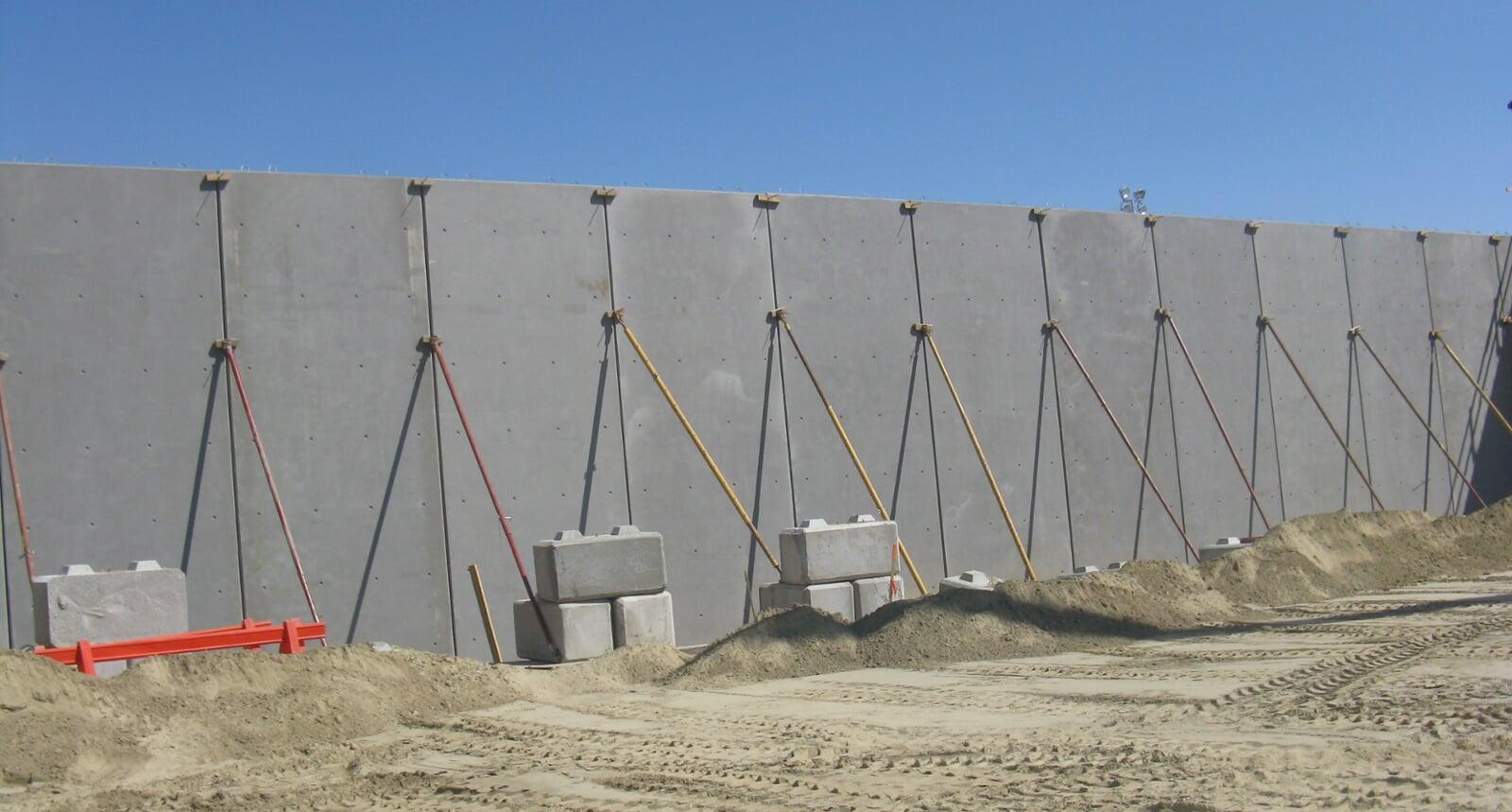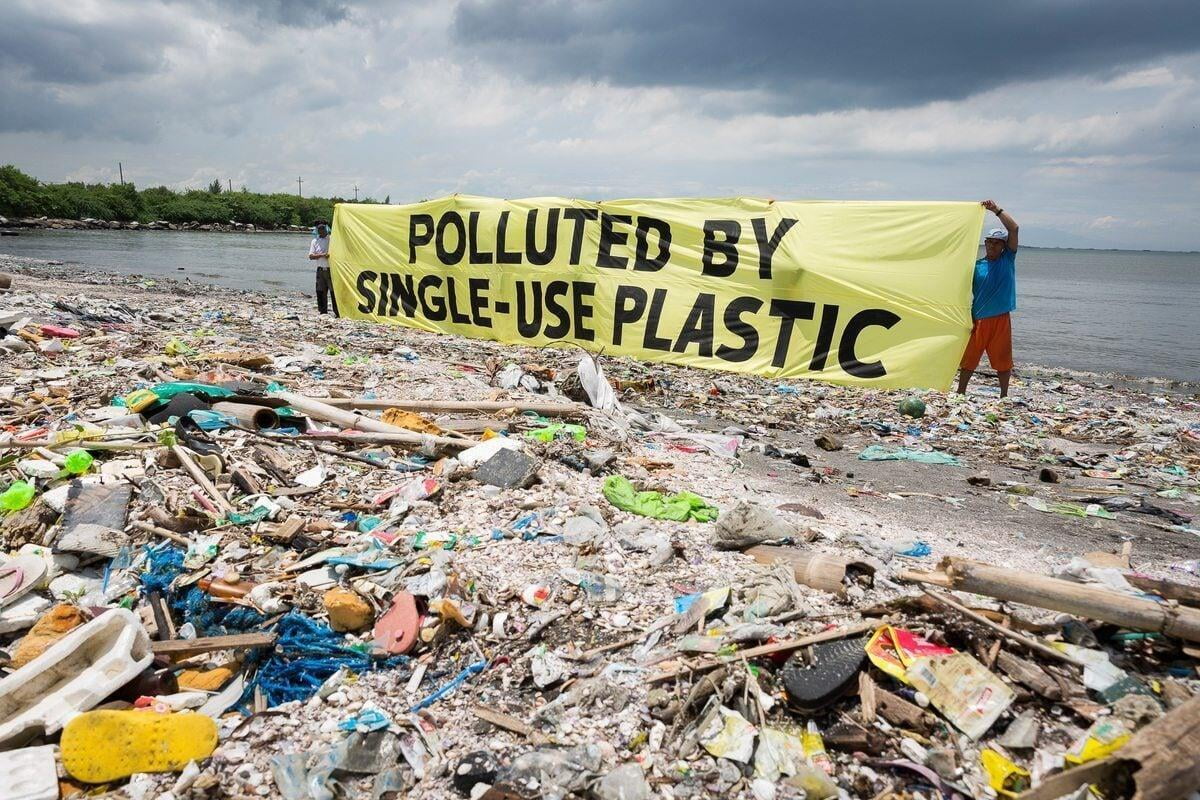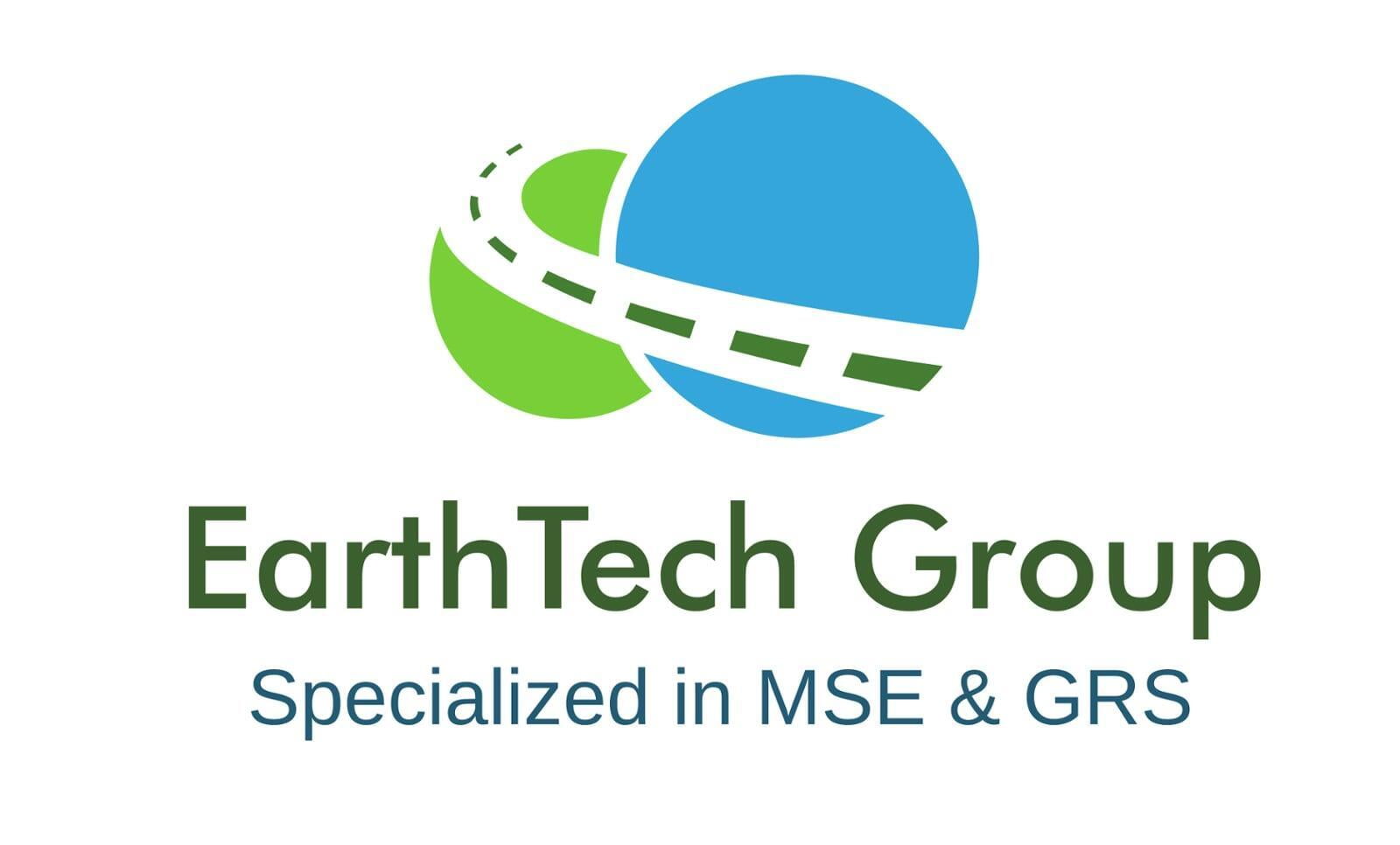Are you interested in green, sustainable civil engineering that does not compromise quality, cost, or design? If your answer is ‘yes,’ then the EarthTech e-Panel is the perfect fit for your next engineering project! The e-Panel is a cost-effective and eco-friendly geosynthetic-reinforced retaining wall. A fitting alternative to concrete retaining walls and panels. This article explains what makes it the innovative product your project needs….
…is a pitch you probably heard before.
Are you interested in green, sustainable civil engineering that does not compromise quality, cost, or design? If your answer is ‘yes,’ then the EarthTech e-Panel is the perfect fit for your next engineering project! The e-Panel is a cost-effective and eco-friendly geosynthetic-reinforced retaining wall. A fitting alternative to concrete retaining walls and panels. This article explains what makes it the innovative product your project needs….
…is a pitch you probably heard before.
But this is not a mere advertisement. It’s a call to action based on the necessity for industrial change on a global scale. And it offers a guide on why and how to embark on that path with the e-Panel.

Source: EarthTech Solutions Corp.
As the world slowly shifts to sustainable development, EarthTech is at the forefront of those overdue changes. The e-Panel system responds to the challenges posed by global resource scarcity and the ecological dilemma surrounding continued human development.
With the 78th United Nations General Assembly (UNGA 78) and the 2023 SDG Summit coming to a close in September, UN Member States came together to reaffirm the 2030 Agenda on the Sustainable Development Goals (SDGs). But optimism stemming from the idealistic political declarations is cut short by the reality of the 2023 Global Sustainable Development Report (GSDR 2023).
The report indicates that the world is stagnating on the implementation of most of the Goals. Most alarmingly, progress is slowing in comparison to 2015, when the SDGs were declared.
Stagnation was highest in the realm of climate responsiveness amid several environmental crises, such as dwindling water security. Which is a relevant concern in the architectural, engineering and construction (AEC) sector, and the industrial, commercial and institutional (IC&I) sector.
Among the specific figures of the report’s doomsday scenario are empirical findings that show sustainable economic growth is deteriorating, as some governments and industries minimize risk by sticking to traditional means of enterprise and reducing research and development
(R&D) budgets in face of post-pandemic uncertainty and global economic contraction.
The report also shows the battle with countering greenhouse gas (GHG) emissions on a global scale is deteriorating severely. The 2022 global output of CO2 emissions amounted to 36.8 megatonnes (mt) (or 36.8 billion metric tonnes). That’s a .5 mt rise from 2021, which was considered the highest in history.
Some estimates suggest global or at least regional emissions could plateau in 2023, though findings reveal that only 18 countries decreased their emissions since 2019. It also remains to be seen whether a hypothetical plateau would happen due to advancements in science and technology or due to slowing economies that typically lead to decreased consumption.
According to GSDR 2023, failure to make an urgent course correction and initiating transformative change will lead to greater vulnerability to future crises and further reinforcing maladaptive unsustainable development pathways.
None of this is hypothetical.
These pathways are actively amplifying the effects of climate change. Organizations like NASA's Goddard Institute of Space Studies (GISS) and the Copernicus Climate Change Service (C3S) published data that shows howthe summer of 2023 was the hottest on record since global records began in 1880. Largely due to the GHG emissions and the return of El Niño.
It also ought to be noted that the summer of 2023 also represents the worst wildfire season in Canadian history according to officials. Every province was affected as 5% (about 175,774 square kilometres or 67,867 square miles) of Canada’s forest land burned as of September 2023.

Source: Reuters
And this is why innovative products like the e-Panel are exactly what is needed to meet the recommendations of 2030 Agenda, and more distance goals like the Eurozone's ambition to become carbon neutral by 2050.
EarthTech’s product line provides green solutions to global environmental problems in civil engineering that could not be more relevant, in 2023 and beyond. The e-Panel is representative of our commitment to those aspirations, and like climate change itself, this scenario is not hypothetical or non-applicable.
You might ask, what do some MSE wall panels have to do with climate change or the success of green engineering?
While it may seem as though the comparison is laughable, the answer is: everything.
But before we venture into the e-Panel's innovative advantages, it's important to evaluate two historical trends to situate the significance of such technological developments.
1. Civil Engineering Projects did not Subside in 1934, and are Unlikely to Subside in 2024 and Beyond
Forecasts for investments in infrastructure will not subside over time, in part thanks to a backlog of projects. Research conducted by institutions and firms like Oxford Economics indicate the global economy expects to see a rebound in investment despite the likely recession in 2024, though investment gaps remain a trend.
As the world settles into a post-pandemic recovery phase and central banks are baffled by unpredictable spending rates despite rising interest worldwide, one could discern a positive trend for the number of planned civil infrastructure projects within and outside of Canada.
Governments are eager to spend on public works as a form of economic recovery as some supply chain issues are alleviating, despite projected labour shortages in some Western countries (among other issues).
This is unsurprising, as many spending efforts aimed at economic recovery have also invested in public infrastructure. The Hoover Dam in the US being a famous example of that tendency.
In fact, investment in infrastructure is the exact recommendation given to all states by the International Monetary Fund (IMF) in 2020, when discussing the recovery of the global economy.
This means that many countries either embarked on infrastructure projects or did not modify existing policies. In part due to the nature of how the scale of construction projects leads to delays rather than cancellations.
The United States federal government announced plans to invest in public infrastructure with the US $108 billion Bipartisan Infrastructure Law. And while the Chinese economy shows some signs of slowing as it continues to recover from the pandemic, its US $1 trillion infrastructure plan remains. India is also expected to continue investing in its public infrastructure plan by declaring the National Highway Road Network will be equivalent to the United States’ by 2024.
Such prognoses may seem ambitious, but even Canada has announced its intention to invest CAD $20 billion in green infrastructure alone over the next decade. It has also dedicated CAD $180 billion to infrastructure over twelve years. That includes 17 active programs that provide funding through the Canada Plan, according to Infrastructure Canada.
Civil engineering projects are unlikely to budge anytime soon, but as inflation and a probable recession continues to weigh down on the economy costs remain a pressing issue.
Did you know that accounting for inflation the Hoover Dam’s construction cost over US $713 million? No one wants to spend that much. Every Canadian, every citizen of every country, would mention about ten to twenty other policy issues before ever getting to the question of infrastructure.
Yet that doesn’t mean there are no solutions.
But before the article dives into that let’s explore the second trend.
2. Emissions, Pollutants and Waste Seldom Deter Development
Or as some development analysts and ecologists may argue, it seldom inspires degrowth. A social movement that argues unrelenting development valued by the gross domestic product (GDP) is unnecessary to further raise human living standards.
Proponents of degrowth, or post-growth economics, argue the ecological damage caused by capitalism outweighs its benefits.
And while the social movement is not without its critiques, the environmental harm caused by almost all anthropogenic outputs is indisputable.

Source: Greenpeace
Yet development continues untethered by the pessimistic empirical findings of environmental studies.
This is observed across the board as even the most climate conscious countries and firms struggle to meet domestic and international sustainability targets.
Another facet of this trend is that in moments of economic slowing or uncertainty climate action is disregarded in favour of perceived economic resilience. One that is found to be permissible even if it comes at the expense of the environment and arguably posterity.
This is best exemplified by the recent pandemic and the economic trends that followed in 2021 and 2022 that, as mentioned, show the worsening of the global carbon footprint and increasing water insecurity amid other shortcomings.
Why not have both?
Both cost-effectiveness and sustainability?
Continued growth and development without contributing to those worsening trends?
Here is the good news: it is possible.
Change started here, with revolutionary products like EarthTech’s e-Panel.
EarthTech presents a twofold solution for both economic and environmental challenges with the e-Panel.
It opens the door to continued development by eliminating loss of quality for efficiency and it counters the bias that sustainable engineering is unattainable or structurally deficient.
How The e-Panel Makes The World More Sustainable
Though the aspects of ingenuity and development are frequently attributed to visually captivating architecture, the minutiae that goes into research, development, and innovation (RDI) is equally important.
Particularly when projects are commissioned on the national or international levels. If sustainability is taken into consideration in a project akin to India's National Highway Road Network then those small details, and all the panels, add up. Just like every little piece of plastic that accumulates in a landfill, a beach, or at the bottom of a water body.
This is where aspects and consequences of civil engineering become interesting.
Concrete is a popular material in infrastructure. It is equally popular when constructing retaining walls and some MSE walls. But its effectiveness as a cost-effective, efficient material has long reached a veritable limit.
Despite developments like curing cement with CO2, it remains a costly process. Not from a mere monetary point of view. It demands a lot of water. About 2.2 to 2.6 billion tonnes of water are consumed by concrete production every year as of 2022.
The production cycle of concrete is also a major contributor to annual global emissions. 8% of the total global CO2 emissions in 2021 came from concrete production. Almost exclusively from the AEC sector.
Its material inefficiency is also linked to its status as a possible pollutant, as the disposal and replacement of concrete is very costly and time-consuming. And if that is not enough the composition of concrete causes it to damage the topsoil, affecting soil health and waste management worldwide. Especially in countries with limited recycling capabilities.
If every bridge, every road and every panel is held by a block of concrete columns and panels, entire sectors of civil infrastructure could be deemed unsustainable. This is made worse by the fact that at the end of its shelf life most concrete ends up in landfills.
Luckily, EarthTech’s innovative designs mitigate these problems.
Starting with the replacement of concrete with recycled plastics. The e-Panel’s innovative design transforms pollution into functionality. Human activity produces over 350 million metric tonnes of plastic waste every year, and for EarthTech each piece of plastic is a resource.
The e-Panel is a guaranteed way to elevate any engineering project and to meet sustainability goals. Every wall panel is a monument to EarthTech’s commitment to implementing its climate positive approach in civil engineering. Including a reduced carbon footprint based on the e-Panel’s longevity and recyclability.
Every morsel of an e-Panel begins its life cycle as a recyclable that is manufactured into an eco-friendly geosynthetic retaining wall reinforced by a polyester grid.
The e-Panel is applicable to a variety of projects given its structural resilience in face of corrosive agents and natural disasters.
Each e-Panel has an expected shelf life of up to 120 years, and once its life cycle is up the panel could be melted down and recycled anew.
Better yet, given its properties the e-Panel does not require extensive cleaning and sanitization, saving production costs and enabling the allocation of resources to other areas of your project.
Imagine that the components of every bridge you cross, and every retaining wall you walk by, could be recycled for a fraction of the cost of traditional materials like concrete.
Imagine that every piece of plastic is no longer a burden but a resource.
Imagine a world where sustainability is no longer an aspiration but an actionable plan.
Doesn’t seem like boring civil engineering stuff anymore, does it?
EarthTech has the blueprint of tomorrow.
Learn more about the e-Panel here and get involved in building the future together with us.

